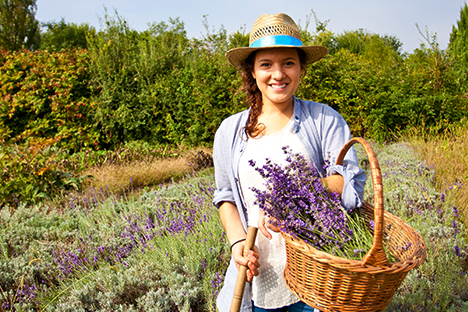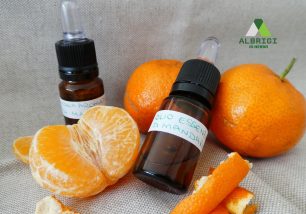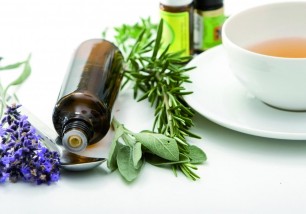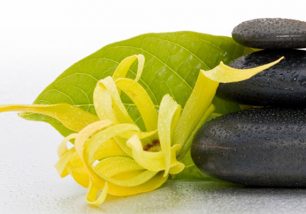MINT ESSENTIAL OIL: CULTIVATION AND PRODUCTION
aromatic plantscultivation of medicinal plantsessential oilfarmsteam distillation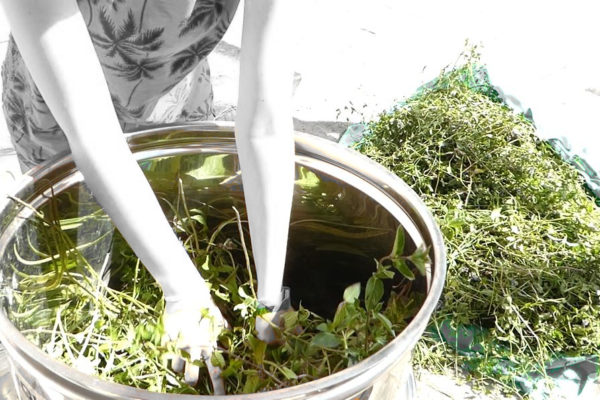
Peppermint is a plant known and used since ancient times, both in the culinary as well as in the herbal field.
Its intense fragrance, its bright green and the simplicity with which it spreads, make it one of the most appreciated and loved aromatic plants, also used to simply adorn yards and vegetable gardens. Regarding cultivation, Mint adapts well to the temperate climate conditions and is quite resistant to low winter temperatures.
This aromatic herb produces a good amount of essential oil, which in addition to having its characteristic fresh scent, possesses countless beneficial properties, both for the mind and for the body. Today this essence is widely used in numerous product sectors and also as a flavoring agent for food products, in particular: chewing gum, confectionery, alcoholic and non-alcoholic beverages; as well as aroma in pharmaceuticals and as an ingredient in cough, cold and digestive remedies.
Mint, therefore, represents a medical plant, intended not only for desiccation, but also for the production of essential oil. How can a medium-sized farm produce by itself Mint essential oil?
The purpose of this article is to provide an overview regarding this matter, starting from a cultivation hypothesis up to the distillation process.
PEPPERMINT CULTIVATION:
Despite being a perennial plant, which would then allow a multi-year renewal crop, the Peppermint cultivation is not made to last more than two years because the plant, from the second year on, produces large quantities of runners, preventing inter-row processing and consequently weed control.
As a sterile hybrid, the propagation of Peppermint occurs exclusively by vegetative means, and exactly by transplanting portions of runners, (about 15 cm long) taken from a one-year Mint culture. The removal of runners is preferably carried out in the fall, followed immediately by transplantation. Placed in furrows distant 50-70 cm from one another and deep 10-15 cm, the runners are then covered and rolled. The optimal density of a Mint plant varies around 5-6 plants / m2, with a planting area generally of 50-70 cm between rows and 30 cm on the row.
Like every aromatic plant, the peppermint plant must be also harvested in the correct time in which it produces the most active ingredients, which in its case is summer. In most cases the harvest takes place twice a year, cutting the plants very low, preferably in the early hours of the day. The first cutting of Peppermint is performed in July in pre-flowering; the second one instead, at the end of summer/autumn.
If you want to use the plant only for the production of essential oil, however, you should prefer instead the period of full blossom, which is the moment of maximum concentration of essential oil.
At each cut, the yield of fresh harvest to be used for distillation are about 9 t/ha.
The yield on essential oil can go from 0.5 to a maximum of 0.9%, for an average of about 0.7%.
Considering the production of fresh plants per hectare and its average yield, it is possible to obtain about 63 kg / ha of essential oil.
CULTIVATION AND PRODUCTION HYPOTHESES:
Assuming to cultivate about 800 square meters of peppermint and considering an optimal system of 5-6 seedlings / m2, at least 4000-4800 plants will be needed to create the system.
If we consider the production of fresh plants per hectare; from a crop like this, during harvest time, at least 720 kg of fresh material can be obtained, which can be used for distillation.
If you have available a 125L capacity distiller, capable of processing 25 kg of fresh plant; it will be necessary to accomplish at least 29 full-loaded distillations in order to process all the plant material.
If you do 4 distillations per day, in 7-8 days, all the work can be carried out, obtaining about 5 kg of essential oil (considering the average yield of 0.7%).
If you want to reduce your working days you could use a 250L distiller.
DISTILLATION:
Proceeding by order, let’s see step by step all the phases of how the production of Mint essential oil takes place, through the use of a 125L distiller.
Required equipment:
· Distiller with 125L capacity
· Stems and flowering tops of Mint, about 22-25 kg
· Running water
· Gas stove
Step 1 – gathering the plant material:
The first thing to do is to collect the plant material, the ideal technique is to cut the plants very low, to collect, in addition to the flowering tops, a good amount of basal leaves, always ensuring anyway the vegetative recovery of the plant.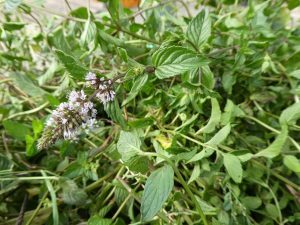
It is good to remember that the Mint essential oil is contained in the glandular hairs present on the surface of the leaves, on the stems and on the floral calyx, so it will not be necessary to chop the plant material for distillation. It is also useful to keep the stems intact and not use just the leaves. This will guarantee a better homogeneous passage of the steam and avoid the harmful “cork effect” due to packing the leaves too tightly during distillation.
Step 2 – load the distiller:
Once the vegetable material has been harvested it is important to proceed with the distillation in the shortest time possible, to avoid leaving the plant material accumulated for too long, and to trigger harmful fermentation phenomena.
Mount the distiller and connect all the connecting pipes for the inlet and the outlet of the cooling water; you can proceed by inserting water into the bottom of the boiler, until it reaches the bottom grid and then load the plant material.
The plant material must be introduced into the boiler by distributing the stems evenly, creating layers. It is very important to press the material well, even by pressing it with your feet, without fear of squishing it too much; insisting especially near the walls of the distiller to avoid empty spaces from forming through which the steam could flow without coming into contact with all the plant material.
Once the load is filled, make sure that all the twigs are kept inside the boiler, positioning the upper grid on them, then close the distiller with its specific hinge.
At this point turn on the cooker to heat the water.
When the internal temperature reaches 50-60 degrees, the cooling water for the condensation circuit opens.
Step 3 – distillation:
At 50 ° C, the distiller’s temperature rises quite quickly and already around the 85 ° -90 ° C degrees the first droplets of distilled will be seen coming out.
At this point you just have to keep monitoring the temperature of the cooling water of the condenser, which must remain warm.
Leave the machine to distill until the level of the essential oil stops increasing inside the graduated cylinder.
Step 4 – bottling the essential oil:
Once the distillation has ended, it is necessary to separate the essential oil from the aromatic water, easily identifiable inside the graduated cylinder.
To facilitate the procedure it is possible to pour the contents from the distiller into a separating funnel, let it rest for a few minutes and gradually open the funnel tap, dripping the floral water first and then in a special amber bottle the Mint essential oil.
Learn more with the video:
Step 5 – maturation and conservation:
As with any freshly distilled essential oil, it is necessary that it ripens before you can fully enjoy its fragrance.
Regarding the conservation, the essential oil is a very delicate substance that can easily change and turn rancid, thus losing its natural scent and developing substances that can also be harmful. Therefore it is important to keep it always in dark glass bottles away from direct light and heat sources.
As we all know, the use of essential oils is done by drops. In fact, their use must be limited to small quantities as these substances are highly concentrated and rich in active molecules, many of which can also have toxic effects. Therefore, when using them it is necessary to do so carefully. Ask experts for advice.
And now all is left to do is to label all the bottles of Mint essential oil!
More informations on:
Peppermint (Mentha x piperita): cultivatin, trasformation and use
Other articles that may interest you:
Essential oils: what are they?
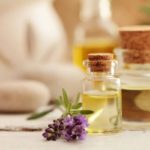 ESSENTIAL OILS: WELLNESS IN HOME
ESSENTIAL OILS: WELLNESS IN HOME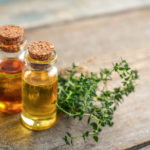 THYME ESSENTIAL OIL: USES AND PROPERTIES
THYME ESSENTIAL OIL: USES AND PROPERTIES AROMATHERAPY: HOW TO CHOOSE AN ESSENTIAL OIL
AROMATHERAPY: HOW TO CHOOSE AN ESSENTIAL OIL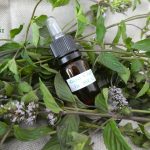 HOW TO DISTILL MINT
HOW TO DISTILL MINT AROMATHERAPY: HISTORY
AROMATHERAPY: HISTORY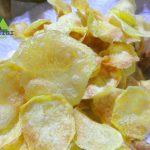 POTATO CHIPS WITH ROSEMARY AROMATIC WATER
POTATO CHIPS WITH ROSEMARY AROMATIC WATER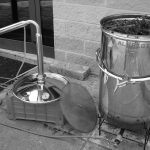 ROSEMARY ESSENTIAL OIL: CULTIVATION AND PRODUCTION
ROSEMARY ESSENTIAL OIL: CULTIVATION AND PRODUCTION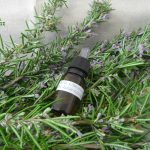 HOW TO DISTILL ROSEMARY
HOW TO DISTILL ROSEMARY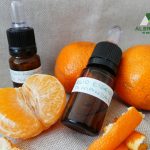 HOW TO DISTILL TANGERINE PEEL
HOW TO DISTILL TANGERINE PEEL NEEM OIL, FROM THE PLANT OF GOOD HEALTH
NEEM OIL, FROM THE PLANT OF GOOD HEALTH HERBAL TEAS, INFUSIONS AND DECOCTIONS: THE DIFFERENCES AND METHODS OF PREPARATION
HERBAL TEAS, INFUSIONS AND DECOCTIONS: THE DIFFERENCES AND METHODS OF PREPARATION HOW TO MAKE HOMEMADE ESSENTIAL OILS
HOW TO MAKE HOMEMADE ESSENTIAL OILS HEALTHY HAIR WITH AROMATIC PLANTS
HEALTHY HAIR WITH AROMATIC PLANTS THE GOOD NIGHT PLANTS
THE GOOD NIGHT PLANTS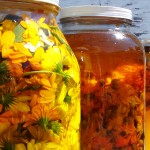 OLEOLITES: THE POWER OF HERBS IN OIL
OLEOLITES: THE POWER OF HERBS IN OIL ENFLEURAGE: ANCIENT TECHNIQUE TO EXTRACT ESSENCES FROM FLOWER PETALS
ENFLEURAGE: ANCIENT TECHNIQUE TO EXTRACT ESSENCES FROM FLOWER PETALS ESSENTIAL OILS AND ECOLOGICAL DETERGENTS FOR HOUSE CLEANING
ESSENTIAL OILS AND ECOLOGICAL DETERGENTS FOR HOUSE CLEANING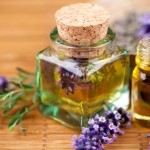 OIL FOR STRENGTHENING HAIR
OIL FOR STRENGTHENING HAIR SCENTED BAGS WITH DRIED HERBS AND ESSENTIAL OILS
SCENTED BAGS WITH DRIED HERBS AND ESSENTIAL OILS PURIFYING AND CLEANSING HERBAL TEAS DO-IT-YOURSELF
PURIFYING AND CLEANSING HERBAL TEAS DO-IT-YOURSELF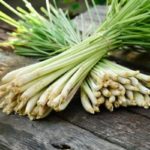 LEMONGRASS: ESSENTIAL OIL TO FIGHT TUMORS
LEMONGRASS: ESSENTIAL OIL TO FIGHT TUMORS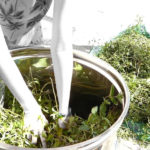 MINT ESSENTIAL OIL: CULTIVATION AND PRODUCTION
MINT ESSENTIAL OIL: CULTIVATION AND PRODUCTION CITRUS FRUITS AND ALZHEIMER’S DISEASE: NEW DISCOVERIES
CITRUS FRUITS AND ALZHEIMER’S DISEASE: NEW DISCOVERIES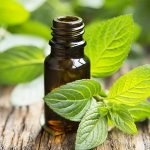 MINT ESSENTIAL OIL: USES AND PROPERTIES
MINT ESSENTIAL OIL: USES AND PROPERTIES